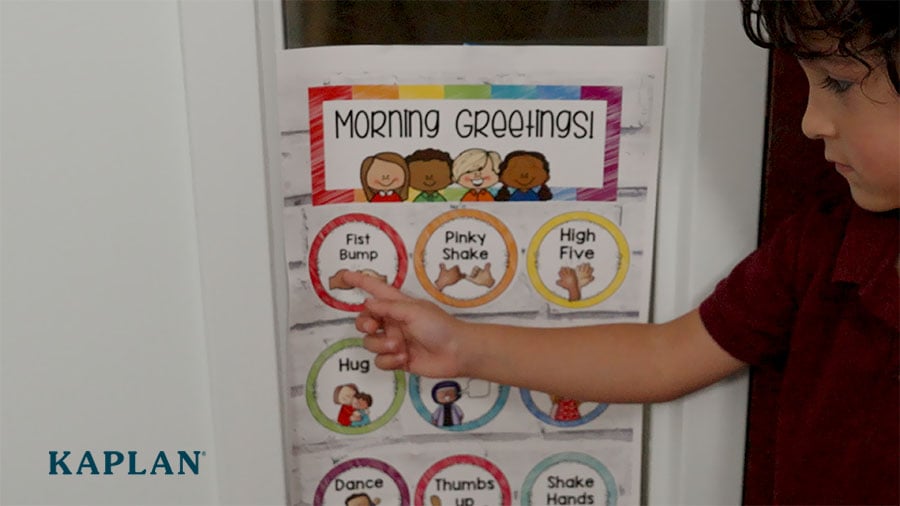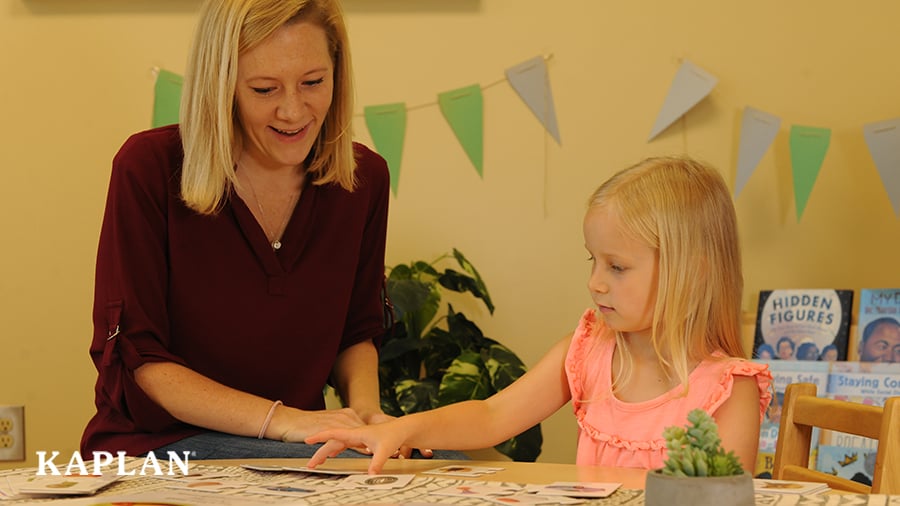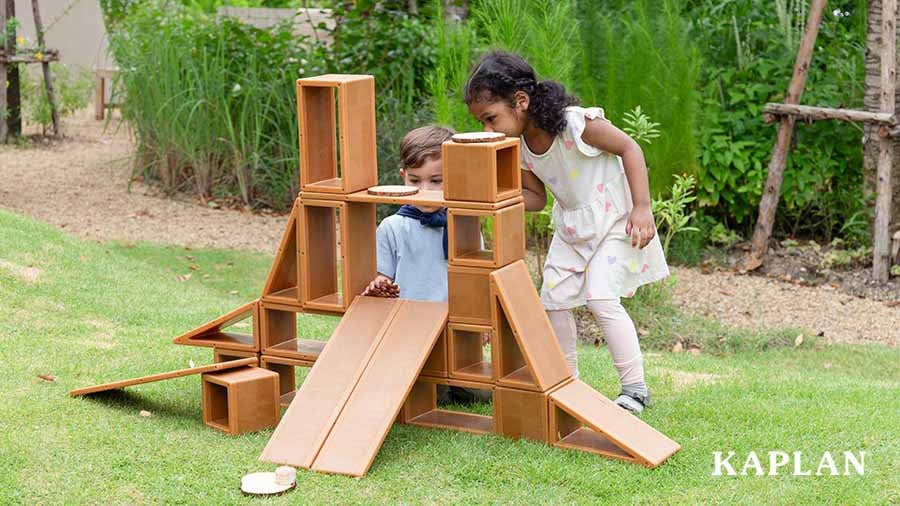When young children face a stressful or frustrating situation, they experience a wide range of emotional responses. Some will get angry and kick at their teachers or yell at their peers. Others will become agitated and throw toys or hide in a corner of the classroom and cry.
As an early childhood educator, you play an essential role in helping children work through these big emotions appropriately. Teaching children how to be resilient improves their ability to "bounce back" after facing stressful or frustrating situations. They will exhibit fewer challenging classroom behaviors, improving their overall well-being and development.
At Kaplan, we know that a child's social and emotional health set the stage for how they will succeed later in life, which is why we are a publishing partner with the Devereux Center for Resilient Children. Together, we offer a variety of resources to help children, ages birth through age five, and their parents build resilience. In this article, you will discover five strategies to help you support children as they learn how to navigate big emotions and strengthen their resilience.

What is resilience, and why is it important for child development?
There is no way for children (or adults) to anticipate when stressful events or misfortune will affect our lives. Learning how to navigate these unfortunate moments is crucial to our emotional health and physical well-being. According to the book Socially Strong, Emotionally Secure, written by Nefertiti Bruce and Karen Cairone, resilience is the ability to recover from or adjust to misfortune.
By strengthening their resilience, children can handle stressful situations without losing control of their emotions or negatively impacting their mental health. This makes it easier for children to build strong relationships, self-regulate, and focus on learning in the classroom.
How can early childhood professionals help children develop resilience?
From building long-lasting relationships with each child to providing a safe classroom environment, you can help children strengthen their resilience in many ways. The important thing to remember is that resilience takes time to strengthen. Incorporate the following strategies in your early childhood classroom each day to help children get a jump start on building this vital skill.

Promote resilience by being supportive and caring.
When you show children you love, support, and care for them, you make them feel safe to express who they truly are in your classroom. This special bond makes children feel confident enough to explore their curiosities, express themselves in positive ways, and build new friendships. Children who have a loving bond with their teacher also feel safe to ask questions and listen to guidance when navigating big emotions. You can show children you support and care for them by:- Listening attentively when they speak and asking questions to further engage in conversation
- Displaying genuine care and compassion by greeting each child as they enter your classroom, mentioning how much you like a child's new haircut, celebrating milestones in their life, etc.
- Teaching children the skills and behaviors that will help them play appropriately with others
- Helping children understand their emotions and manage big feelings in appropriate ways
Promote resilience with positive home and school partnerships.
The relationship between an early childhood teacher and a child's family/caregiver greatly impacts a child's success. If these relationships are positive, children feel greater acceptance and importance in the classroom and the world. When children feel accepted, they gain confidence and easily overcome frustrations and stressful situations. To build positive home and school partnerships, you can:- Learn about and celebrate the different cultures of each child in your classroom using photos, books, or in-person presentations
- Create a system that allows for ongoing communication between school and home so that parents and caregivers are always aware of what their child is doing and learning in your classroom
- Encourage children to share events from their school day with parents and caregivers when they get home
- Share developmentally appropriate behaviors and milestones with parents and caregivers so they better understand their child's growth

Promote resilience with classroom activities and experiences.
When children play, they learn. They learn how to initiate friendships, exercise control over their emotions, and confidently solve problems. However, playtime can often result in frustration when things do not go according to a child's plan. It is the role of an early childhood teacher to create opportunities for children to learn through play and strengthen their resilience daily. Some classroom activities that help strengthen resilience include:- Open-ended play incorporating blocks and other manipulatives that encourages children to build creative structures and shapes while dealing with the forces of gravity
- Outdoor play that allows children to work their large muscles while initiating peer interactions
- Reading books about feelings, emotions, belonging, and other topics that builds confidence and gives children techniques they can use in challenging situations
- Incorporating calming exercises throughout the day to help children regulate their emotions during periods of high stress or anxiety

Promote resilience with predictable daily routines.
Classroom transitions can be difficult for some children. When a child feels you are forcing them to stop an activity they enjoy, they may react with an emotional outburst that disrupts the entire classroom. With predictable classroom routines, you help children feel in control of their day, making them less likely to get angry or anxious. You can establish predictable daily routines by:- Hanging a schedule chart in a prominent area of your classroom so that all children are aware of the daily routine
- Giving children enough time between activities so that they do not feel rushed to complete a task or clean up a space
- Warning children when an upcoming transition will happen so they feel more relaxed and comfortable with the change
- Including children in the creation of your daily schedule
Promote resilience with a warm and welcoming classroom environment.
The classroom environment can affect a child's mood, behavior, learning ability, and resilience. Well-designed classroom spaces give children room to move around, quiet areas they can escape to when they need rest, and access to materials that inspire their imagination and natural curiosities. All of which benefit children's development and overall well-being. To create a classroom environment that promotes resilience, you should:- Keep classroom materials clean, organized, and in a place where children can easily access them for play
- Use mirrors to reflect natural light around the room and brighten up play areas
- Provide a quiet area children can go to when they need an escape from the hustle and bustle of the main classroom
- Position your classroom furnishings and learning centers to encourage open-ended play
- Hang photos of each child and their family around the classroom to make your space feel welcoming and inviting
Help children build their resilience.
Now that you better understand what resilience is, it is time to start teaching children how to build this vital life skill. Remember, this takes time and requires effort from families and caregivers while the children are at home. If you need additional resources and tools to help nurture children's behavioral health in your classroom, visit our website.
Do you have a Learning Center subscription? We constantly update our learning center with new resources, articles, and videos that help early childhood professionals support age-appropriate development and nurture positive classroom experiences. Subscribe to the Kaplan Learning Center and receive instant, weekly, or monthly email alerts featuring resources to help you foster child development, inspire creativity, and become a champion of play. 

